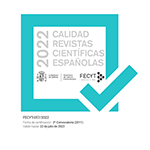Identification and assessment of the crop wild relatives of Spain that require most urgent conservation actions
Abstract
Crop Wild Relatives (CWR) are receiving significant attention over the last decades. Numerous conservation plans and guidelines to better manage these resources have been developed lately at both national and international levels. In this sense, Spain is following a similar path to that followed by other countries and has included CWR in the National Strategy for Plant Conservation of Spain and invested in scientific projects dealing with their conservation.
In this work, we present a preliminary assessment of the conservation status (both in situ and ex situ) of the Spanish CWR that are in a most urgent need of conservation. Crossability to crops, endemicity, threat status according to IUCN standards and high-quality georeferenced occurrence data were the criteria applied to select the target species, generating a list of 47 CWR species. Eleven of them, classified as Critically Endangered or Endangered by IUCN criteria are not, and should be, included included in the National Catalogue of Threatened Species of Spain; however 35 of them are included in at least one autonomous catalogue. Seventy-five per cent of the species are represented in protected areas, but if a minimum of five populations inside protected areas is sought the representation decreases to a 37%. The preliminary assessment of ex situ conservation shows that a high percentage of the species (81%) has at least one accession in national or international germplasm banks. However, additional studies are needed to determine if the accessions included in germplasm banks provide an adequate representation of the genetic variability of the species.
Downloads
Article download
License
Mediterranean Botany is an open access journal to promote global exchange knowledge. It facilitates unrestricted access to its contents from the moment of publication in its electronic edition. The originals published are property of the Universidad Complutense and it is mandatory to cite such source in case of total or partial reproduction. All contents are distributed under a Creative Commons License 4.0 (CC BY 4.0). This circumstance must be expressly stated in this way when necessary. You can check the informative version and legal text of the license.














